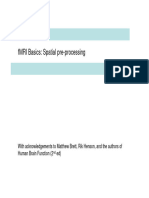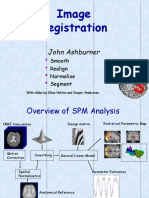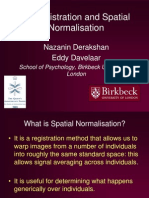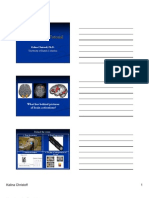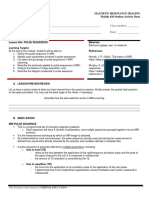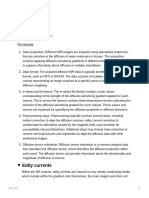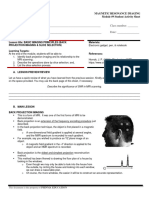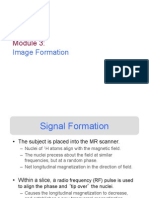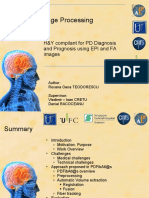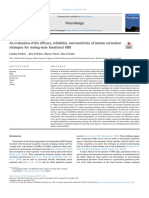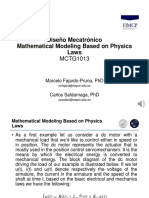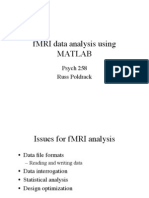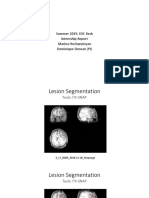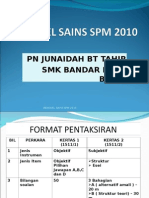0% found this document useful (0 votes)
111 views53 pagesfMRI Preprocessing Guide
The document discusses the steps involved in preprocessing fMRI data. It covers slice timing correction, realignment, coregistration, normalization, and smoothing. Key points include that slice timing correction accounts for differences in acquisition timing across slices, realignment corrects for subject movement, coregistration aligns functional and structural images, normalization warps images to a standard template, and smoothing reduces noise. Quality control is important at various stages to check for artifacts in the data. Common tools used in preprocessing include SPM and FSL.
Uploaded by
JosueCopyright
© © All Rights Reserved
We take content rights seriously. If you suspect this is your content, claim it here.
Available Formats
Download as PDF, TXT or read online on Scribd
0% found this document useful (0 votes)
111 views53 pagesfMRI Preprocessing Guide
The document discusses the steps involved in preprocessing fMRI data. It covers slice timing correction, realignment, coregistration, normalization, and smoothing. Key points include that slice timing correction accounts for differences in acquisition timing across slices, realignment corrects for subject movement, coregistration aligns functional and structural images, normalization warps images to a standard template, and smoothing reduces noise. Quality control is important at various stages to check for artifacts in the data. Common tools used in preprocessing include SPM and FSL.
Uploaded by
JosueCopyright
© © All Rights Reserved
We take content rights seriously. If you suspect this is your content, claim it here.
Available Formats
Download as PDF, TXT or read online on Scribd
/ 53

